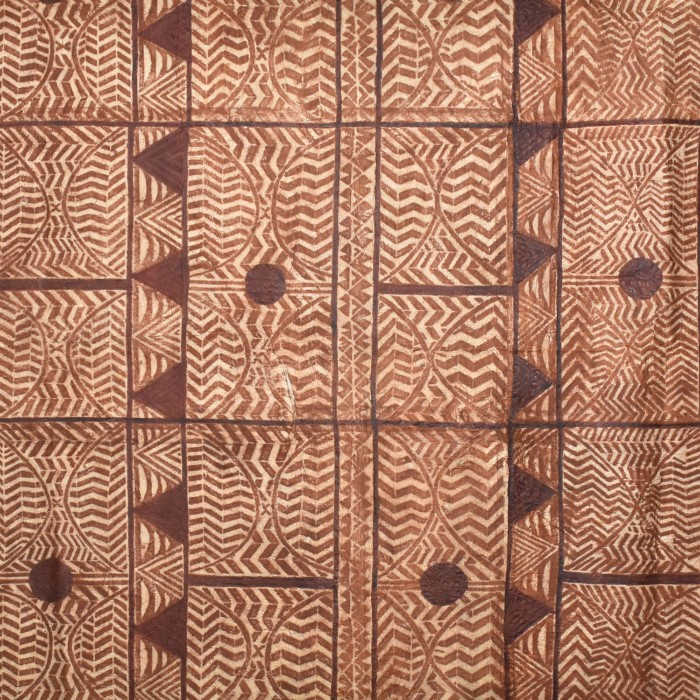Weaving a Shared Culture
Two Pacific Islander artists at NHM combine a traditional craft with contemporary weaving and design
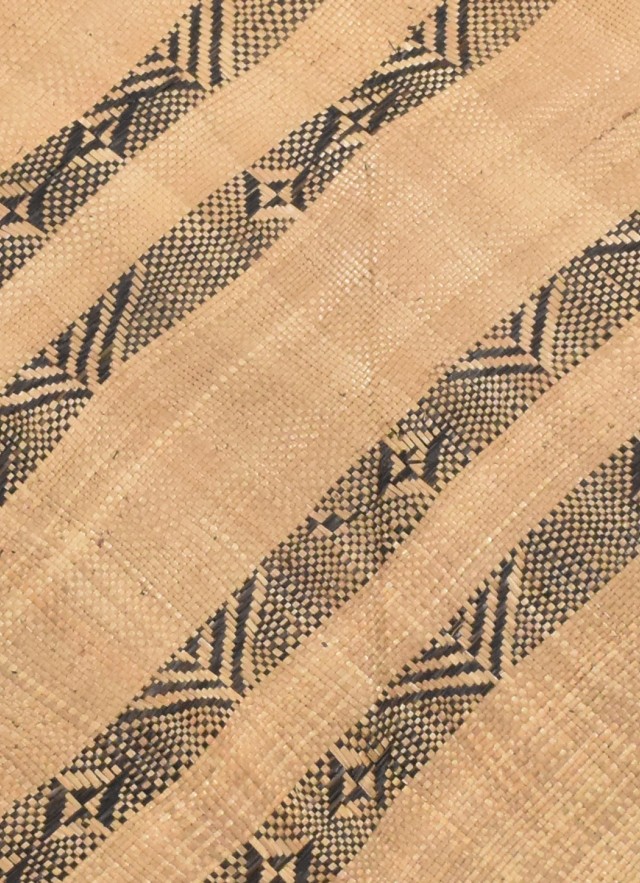
Published January 3, 2023
NHM cares for many incredible and rarely seen woven mats and tapa from the Pacific Islands. This January, two artists will meet those cultural pieces and weave a new story at the Museum.
NHM's Anthropology Department and the Pacific Island Ethnic Art Museum (PIEAM) are excited to welcome Indigenous Chamorro fiber artist Maria “Lia” Terlaje Barcinas and Samoan graphic designer, muralist, and PIEAM artist-in-residence JP / Jason Pereira onto the museum campuses. The artists will meet the many tapa and woven mats from the Pacific Islands being cared for and collaborate on creating two new sister mats that will reside at each museum as part of a grant from the National Endowment for the Arts.
The project follows the recent online exhibition The Fabric of Community: Tapa and Woven Mats from the Pacific Islands, funded by the National Endowment for the Humanities, which made much of the tapa and woven mats from the Pacific Islands that NHM cares for accessible for the first time. NHM partnered with Pacific Island community advisors from Southern California to bring this collection to a wider audience. The work of respectfully introducing these cultural pieces to more of the public and creating a resource continues with the help of advisors from the community and institutions like PIEAM.
“In our oral histories, the traditional plants which we use for fiber arts are our relatives. As Indigenous people, these plants and the traditions of utilizing them are sacred to us and have significantly shaped the world we live in.” Lia Barcinas
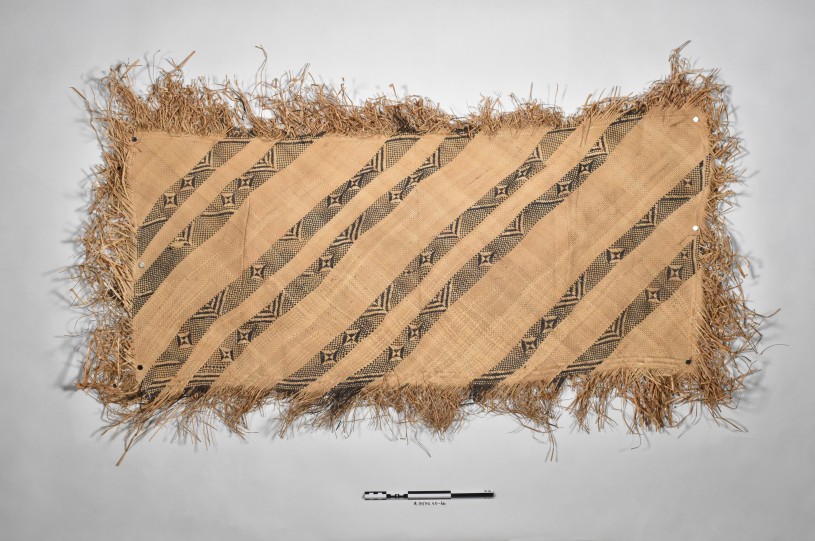
While produced the world over, tapa (barkcloth) and woven mats made from plant fibers are especially important among cultures of the Pacific Islands. Historically, they’ve been used as clothing, wall hangings, and for many other purposes. These textiles represent respect, connection, and kinship. They are often crafted or gifted for important ceremonies like weddings and funerals or similarly momentous life events. Weaving mats and creating tapa can involve many many people imbuing these items with community from the outset.

“For me, especially as a weaver, to get to work specifically around the idea of mats and fiber arts is a dream. I would have never imagined something like that,” says Barcinas. “How do you get here from weaving with your grandma in the backyard?”
Barcinas is a weaver who collaborates with her two sisters to produce innovative woven sculptures as well as more traditional expressions of the craft. When she explains what tapa means to her, she turns to oral history. “Maui trapped the sun because his mother was trying to make tapa, and the sun was going through the skies too quickly for it to dry. So she's working all day long and her son is watching her get nowhere. So Maui is the one who weaves the rope and traps the sun and slows it down so that it has enough time during the day for the tapa to dry,” Barcinas says. According to the story, tapa is so important to the cultures of the Pacific Islands, it was worth capturing the sun and reordering the world to ensure the barkcloth’s production. “In our oral histories, the traditional plants which we use for fiber arts are our relatives. As Indigenous people, these plants and the traditions of utilizing them are sacred to us and have significantly shaped the world we live in.” Lia Barcinas
“I look at tapa as our cultural art form. Living with it and using it in our cultural practices, especially for funerals, weddings, and special occasions,” Pereira says. “They're often gifted or they're brought out on full display, covering the floor, covering the walls.”
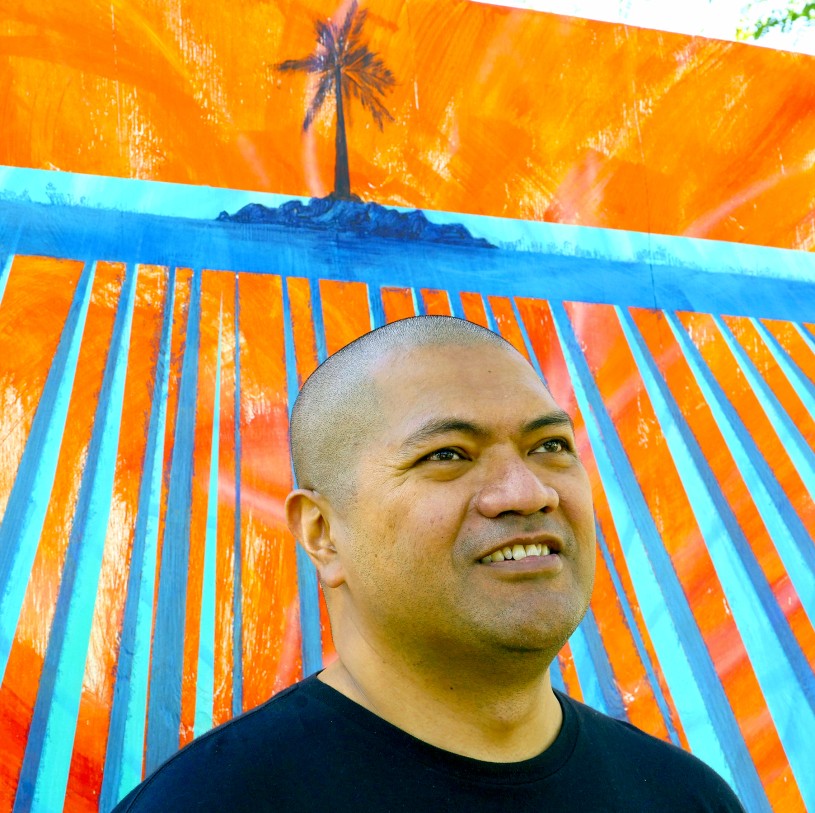
Meeting the Mats
Before they begin working on their own woven mats, the artists will spend time with the tapa and woven mats being cared for at NHM. The number of tapa and woven mats being cared for at NHM is extensive, but the size and fragility of these ancestor pieces means they’re difficult to fold, store, or safely display for the general public. Few non-researchers have had the chance to share space with them, but the artists plan on setting aside time for what Barcinas calls: “meeting the mats.”
“I get chills when I think about it, because of course, these are mats that are from all over the Pacific,” Barcinas says. “Everyone does weaving a little bit differently–they have the basic structures and then to do the designing and the decorations of the mats, like patterns, those are all very special and a lot of times they're unique to family lines or clan lines…It's really exciting to get to meet mats that are outside of your family. They kind of become like a relative in a way where you get to meet them and just interact with them.”
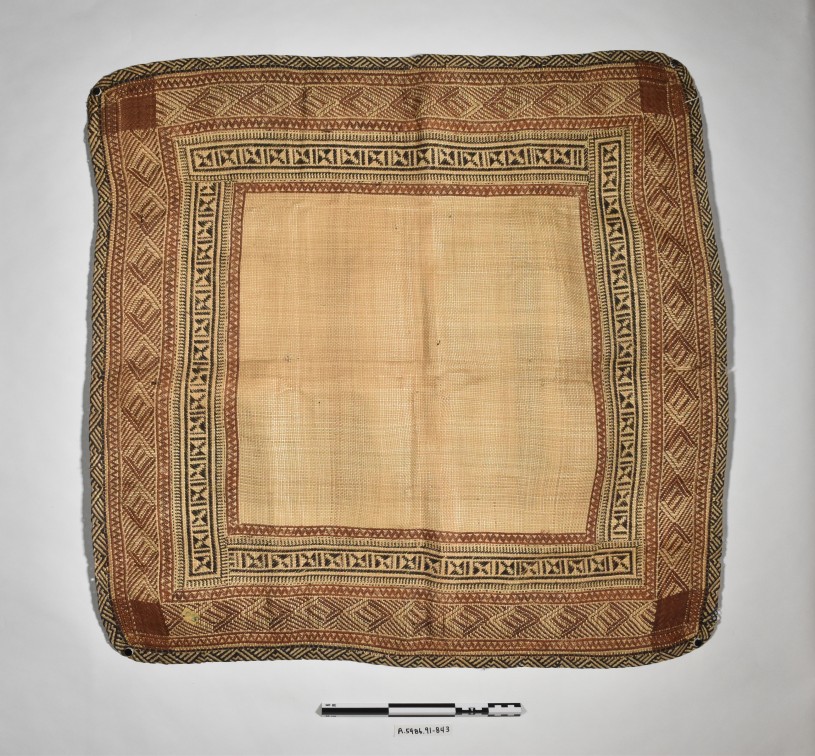
It’s a unique chance for both artists to study the craft behind these objects in-person, in turn connecting with the people behind their creation.
“I'm looking forward to seeing those in person when we come to the Natural History Museum, to look at them and know that these meant something to families. There were our ancestor artists who made those, and I know what that process looks like, especially the giant ones, those are huge community projects,” says Pereira.
Weaving a New Chapter
The artists will be incorporating plant and other materials from Los Angeles as well. Pereira and Barcinas are looking to the environment around NHM and the Indigenous people of California for inspiration and connection for their work. The plant materials used in any weaving tell their own story about the environment and the innovation of the people crafting the object, a thread Barcinas and Pereira hope to incorporate into their own mats. Weaving with invasive species or even what’s perceived as waste–right now everything is on the table. “What are we gonna find that is and what stories do those tell about kind of what's happening in California?” asks Barcinas.
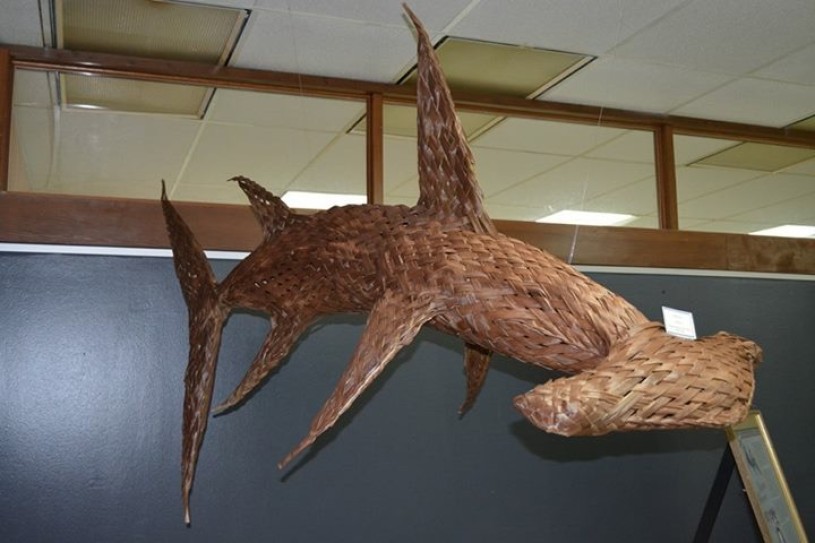
“The thing that I work the most with is coconut leaves, but one of the things that weaving really has taught me is the appreciation for Indigenous practices of making livelihoods and art with the materials around you,” says Barcinas. “So that's a really exciting part of our project–we don't know what I'm even going to be weaving with. That's gonna be informed in place together with JP.”
“There's magic that can happen and we want to allow for that,” Pereira says.
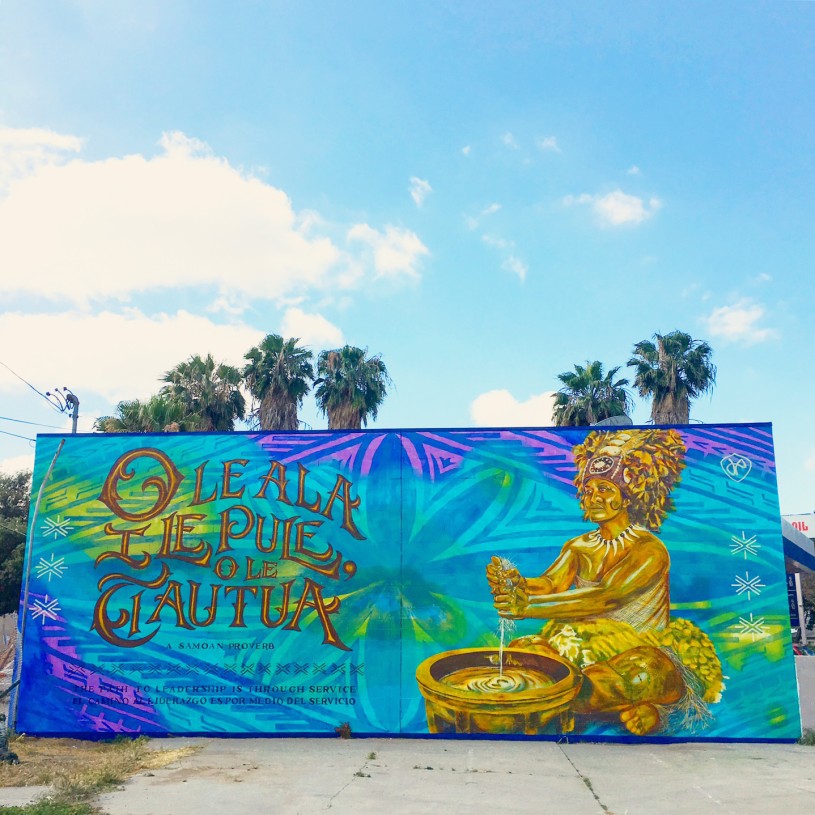
“I think in general people think of museums as things of the past,” says Pereira. “But with what we’re doing here, they’ll see living artists creating something new, and something that is inspired by our past and our heritage, how we would take this practice of old, but do it today–because we're living, and creating these here, in America. Just like the weavers and artisans before me, they used the materials and the resources around them. I don't have access to pandanus leaves and coconut palm fronds and things like that, but there is a tapestry to be made.”
"I'd like for visitors to learn from our work is that this art is not just something of the past, something that's of our history and heritage. We're still creating things and we're still bringing about new works." JP Pereira
The artists’ conception of the project, while still developing, points to an important thread running through museums like NHM’s relationship to tapa and woven mats from the Pacific Islands that they care for. The tapa and woven mats in NHM’s collections were largely assembled by people outside of Pacific Island cultures, facilitated by the same European and American colonization that brought about the destruction of many traditional lifeways of the Pacific Islands region. These objects have been removed from the pattern of their lives–the giving, sharing, and normal use within the communities that produced them. Outside of the museum space, their production continues to grow and change as do the cultures that make them. “Some of those mats are made for sitting on,” says Pereira. “In settings that bring people together. That is still a universal need, to bring people together. Having a place and a space for everyone to come together.”
“I'd like for visitors to learn from our work is that this art is not just something of the past, something that's of our history and heritage. We're still creating things and we're still bringing about new works. But the way that we like to do it is to tie in our past to our present. This is how we continue the journey of this creative activity when we make these new things. Then the generation of artists who come after us, they can use these new works that we’ve made today as a reference point for their own new works to be made,” says Pereira. "It's like this continuous woven tapestry or braided rope of artistic existence.”
Pereira and Barcinas will begin working on their tapestry on January 17, 2023, starting their residency with a month at NHM and continuing their work at PIEAM for a month. You can catch the artists at NHM, so keep your eyes peeled for a new story being woven.
